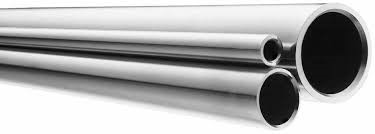
When it comes to construction, building codes often require the use of heavy wall stainless steel tubing. It is also commonly used as a component in other construction projects. The main reason for this is that it offers an affordable alternative to traditional steel. Moreover, arch city steel tubing is corrosion resistant and easily worked with in order to obtain the desired results.
Heavy wall tubing comes in various diameters, gauges and compositions. They are manufactured as per client specifications. For instance, they are available in both end-to-ends as well as partial rolls. The latter type is preferred when more than one construction site needs to be handled at a time. This type of tubing is very cost-effective, as well, and can be purchased at discounted prices. Following are the factors you should consider while installing heavy wall stainless steel tubing:
Length of the section:
The length of the sections used in arch city steel tubing is dependent mainly on what purpose they are intended for. If it has a larger diameter, means it has a higher load capacity. On the other hand, if it has a smaller diameter, means it has a lower load capacity.
For instance, a single curtain panel will not require as many sections as a sectional panel. Single curtain panels can be used in interior and exterior wall applications. There are many styles available to suit the overall look of the building. Aesthetically pleasing options include spiral sections, which can be used in virtually any application.
Tubing type:
Tubing can be obtained in both pre-manufactured and custom-made forms. Pre-manufactured tubing is easier to handle because it is already hollow inside. However, it is more expensive than custom-made tubing. Custom-made tubing is made to exact specifications, to ensure that it fits exactly where it is to be used. The spiral style, for example, is made to fit the requirements of any given job site.
Heavy wall sections and flexible wall sections:
Heavy wall sections come in different diameters to meet any job requirement. These options are available as flexible sections, which allow the use of different diameter materials depending on the application. Rigid wall sections are useful for securing materials to the underlying surface. These are often reinforced with stainless steel ties.
For exterior applications, such as walls or fences, these wall sections are designed to withstand weather conditions. They are available in various diameters to meet any need. Flexible wall sections are available in various thicknesses to accommodate the varying materials to be secured to the surface. They are also available as pre-fabricated lengths of sections.
Types of accessories and their uses:
In addition to the types of materials to be supported, different wall sections come with various accessories to help secure the materials to the surface. Steel ties and brads, for example, are available to secure the materials to the desired height. Other accessories include anchors, which are available as individual attachments or in kit forms to ensure a strong installation. These accessories can also be interchanged for a one-of-a-kind look that no one else has.
Why is the planning necessary before the installation process?
- When it comes to installation, proper planning is key. Before cutting and welding the steel tubing, it is important to first prepare the area to be secured. Depending on the application, waterproof materials may be required. A rubber backing may be applied to the material before cutting. This will provide a slip-resistant grip on the material during assembly and cutting. This prevents damage to walls that could occur if the wall is not properly secured.
- Heavy wall sections are pre-fabricated lengths of tubing that are then cut to the appropriate length. After the sections are cut to the proper length, they are then welded together. Depending on the application, these tubing sections may be held together using galvanized steel ties and stainless steel brads or by interconnecting sections. The tube sections are then Ready for Use (RU) at the factory.
- Assembly and installation are two critical steps in the fabrication of a metal structure. Once the structure is constructed to specifications, support structures are necessary to ensure the structure does not break or cave in. Brackets, tiebacks, and tiebacks systems are used to support the structure while it is being assembled. Without these supports, the entire wall would buckle and collapse.
- Heavy wall sections are used to cover the entire wall where structures are being installed. Many of these are heavy-duty tubing already assembled for the project. Other sections require construction or welding of their own. Regardless of the application, most installations of heavy stainless steel tubing will include these two components.
Benefits of stainless steel tubing:
- Stainless steel tubing is hardy, long-lived, and easy to maintain. It is the perfect material for commercial transportation, and other high-damage-risk uses.
- Stainless steel tubing can be used for various purposes: structural, agricultural, fluid transport, consumer products, industrial machinery, components, and more.
- Compared to plastic, wood, and other synthetic materials, stainless steel is stronger and more cost-effective for highly-trafficked and corrosive environments.
